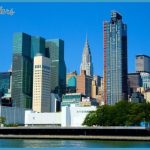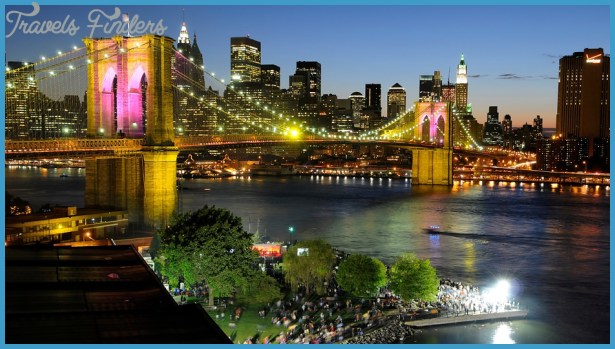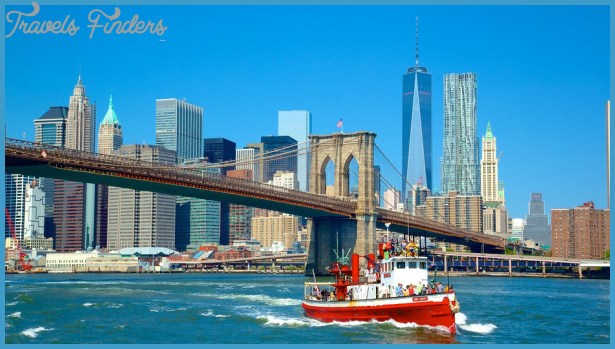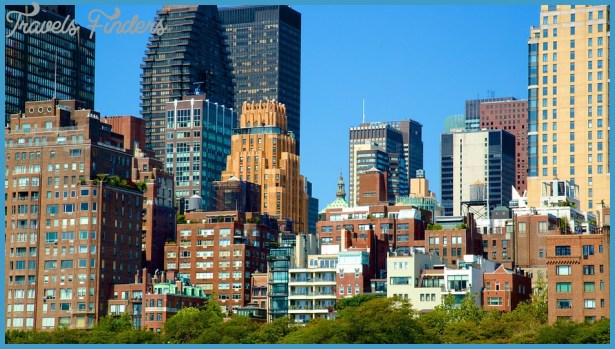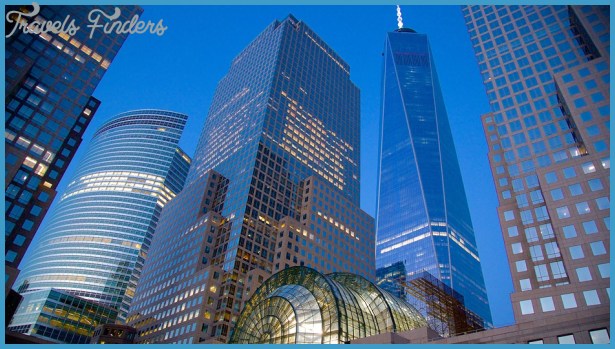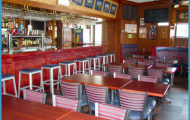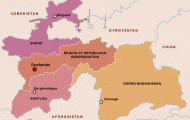New York Churches Foster a Sense of Community
The overwhelming majority of Latinos in New York has been and still is Catholic. They have come a long way since those early days in 1940, when only six churches were serving the needs of Puerto Ricans and other Spanish-speaking faithful. Today, Latino Catholicism permeates the entire Church, but the institution is unable to catch up with the Latino tide. Just in New York City, Latinos represent over 50 percent of Catholics. Masses in their neighborhoods are crowded, for they attract the local residents and also those who have left for other neighborhoods and return out of allegiance to their parish or for lack of masses in Spanish where they live now. In the barrios, Spanish masses are scheduled back-to-back, up to three on Sunday, with accommodations for the overflow of attendees in the churches’ auditoriums.
Like their insertion into society at large, the incorporation of Latinos into New York State’s Catholic Church started at the bottom, figuratively and literally, because when Latinos were still few, masses for them were held in the churches’ basements. Things began to improve with time. Significant change occurred during the tenure of Archbishop Francis Cardinal Spellman. As the head of the Church in New York State during the time of the great Puerto Rican migration (1946-1964), Cardinal Spellman took some initiatives to facilitate the incorporation of migrants into the Church. For one, he wanted them to become Americanized as soon as possible.
Nevertheless, Puerto Ricans stuck to their language and popular traditions, which were strongly rooted in the Puerto Rican countryside. To prevent further ethnic segregation, Spellman did not allow the creation of national parishes, preferring that Puerto Ricans integrated themselves into the existing territorial parishes. However, he supported initiatives to make church personnel sensitive to the needs of Puerto Ricans living in the archdiocese. Cardinal Spellman established the Office of Spanish Catholic Action and sponsored the annual celebration Puerto Rico’s patron saint. Starting in 1953 the Feast of St. John the Baptist became a rallying event bringing together Puerto Ricans and other Latinos. Furthermore, during the 1950s the cardinal sent graduating seminarians to learn Spanish at Georgetown University; afterward and until the 1960s, he made it possible for hundreds of priests, religious people, and laypeople to receive language
and cultural training at the Institute of Intercultural Communication, which was created under his auspices at the Catholic University in Ponce, Puerto Rico. In contrast with Spellman, who created 40 parishes, the current cardinal, Edward Egan, closed 31 parishes and 14 schools in 2007. Latinos are protesting and even complaining to Rome about the decisions of a church that is shrinking, instead of growing, as the number and spiritual needs of Latinos are growing.
As everywhere in the nation, the Catholic Church in New York State is short of priests, especially priests who can speak Spanish. The way Church authorities have dealt with this is mostly by importing clergy. Today the Dominican Republic, Colombia, and Mexico supply religious personnel for New York State and other dioceses. Their presence is instrumental in tending to the needs of a flock whose main source of growth is through migration. Another way the Church has tackled the dearth of clergy is by promoting vocations to the priesthood, a call few Latinos have been answering to.
Latinos, nonetheless, charge ahead with their faith and go on practicing at home and at church. Continuing a pattern characteristic of their countries of origin, women have played the most important role in keeping alive Catholic beliefs and practices in New York State. Whether in the family, the parish, or the community at large, mothers and grandmothers have been the bearers of popular religiosity; for it is typical of men to say that religion es cosa de mujeres (is a woman’s thing). Even when most of them were homemakers before they started double shifts as housewives and salaried workers Latina women were teaching the basics of Catholic faith to their kids, providing services as healers and rezado-ras (leaders at prayers in mournings or other special occasions), and carrying on functions in the Church’s praying groups and devotional rituals. In front of the home altars, in church, or at bed time, women have instilled reverence for and knowledge of the faith’s mysteries, the saints, and what they stand for over generations.
The majority of New York State’s Latino Protestants are Puerto Ricans.19 They have been exposed to U.S. Protestant proselytism both in Puerto Rico and New York State. Because they established the largest Latino community in New York City early in the twentieth century, they also founded numerous churches under their own leadership. Puerto Rican Protestants were not hindered, unlike Catholics, by lack of control over their religious institutions. Protestantism allows more room for entrepreneurship. Thus, religious leadership in evangelical, especially Pentecostal, churches is less centralized through formal and hierarchical structures than in the Catholic and mainline Protestant denominations. A byproduct of this organizational characteristic is that the newer migrant groups are generating their own clergy. In areas where Dominicans live, for instance, many evangelical churches have been set up in which the laity and ministers are of the same nationality (though people from other Latin American countries sprinkle the
audience). Today, Latinos are more diverse in their religious affiliation than in the past, as approximately 25 percent have switched from Catholicism to Protestant denominations.20 Among recently arrived migrants many come already affiliated with Protestant churches because religions other than Catholicism have made significant inroads in Latin America. Others convert to Protestantism once here for several reasons, such as the desire to adapt to U.S. culture, which is strongly associated with Protestant values.
Church services are held in Spanish depending on the congregation’s needs, whereas in Puerto Rican congregations today services in English are more common. The community the Latino faithful has built revolves around shared religious beliefs and practices that draw on a common Christian background. The instruments normally used for building community are a common language and common experiences the aches of the body and the soul, as well as the need for divine and fraternal help to overcome personal troubles, whether material or spiritual. Churches have often taken the lead in addressing serious issues in Latino barrios. With their own resources, private donations, and government contributions, a plethora of organizations have arisen over the years to tackle housing, education, migration, and drug problems.
Ministerio Way Out is an example of a Christian program established in the South Bronx in 1969. Its mission is to help addicts overcome their dependency with the help of religion and standard detoxification therapies. In 39 years of work, Ministerio Way Out has served 8,000 patients, 80 percent of whom have overcome their addictions.21 Catholics too have launched initiatives to assist Latinos in solving urgent problems. Asociacion Tepeyac is one of the most recent and visible examples of such initiatives. Established in 1997, this multiservice association has worked mainly with Mexicans. Today, it serves 10,000 members with computer and English classes, leadership workshops, legal assistance, and the organization of religious and cultural festivals such as Cinco de Mayo, as well as other events.


